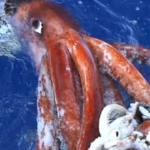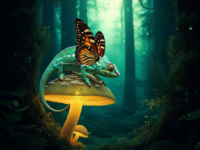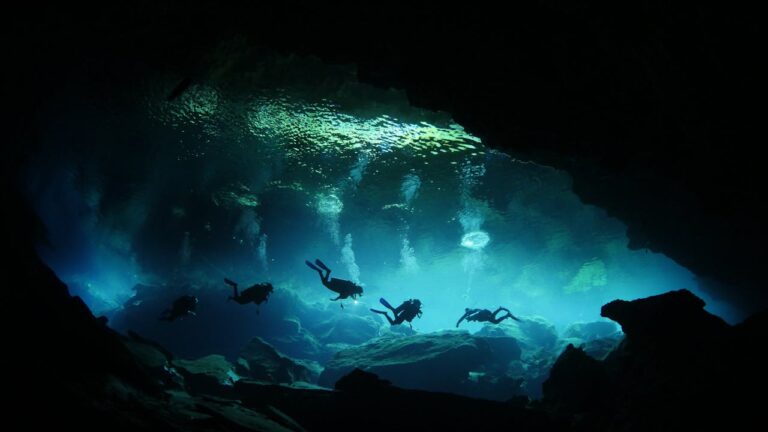Introduction
Imagine a world so dark you can’t see your hand, where freezing temperatures and crushing pressure bend the rules of survival as we know them. That’s the deep sea—a place as alien as any distant planet, yet right here on Earth. It’s home to creatures with jaw-dropping adaptations that seem more like science fiction than reality.
The deep sea is a treasure trove of bizarre life forms and secrets waiting to be uncovered. For marine biologists, animal enthusiasts, and science educators alike, understanding how animals thrive in this extreme environment isn’t just fascinating—it’s crucial for unlocking the mysteries of Earth’s final frontier. This post takes you on a deep dive into the abyss, showcasing the adaptations that make life there possible, spotlighting incredible species, and reflecting on why these ecosystems desperately need our protection.
The Abyssal Environment
Before we can celebrate its inhabitants, we need to understand the deep sea itself—the ultimate “challenge accepted” for survival.
Crushing Pressure
Down here, water pressure increases by about one atmosphere for every 10 meters of depth. By the time you’ve descended to 4,000 meters—hello, abyssal zone—it’s like having the weight of a small car squeezing every square inch of your body. Yet somehow, deep-sea animals shrug this off, a feat we’ll explore shortly.
Eternal Darkness
With sunlight snuffed out beyond 200 meters, the deep sea is cloaked in an unending, pitch-black night. This absence of light fuels all sorts of unique adaptations, especially bioluminescence. Spoiler alert—it’s nature’s most incredible light show.
Freezing Temperatures
At depths of over 1,000 meters, temperatures hover near freezing—between 2°C and 4°C. For animals, regulating body processes in these hostile conditions takes serious innovation.
How many of us would survive even five minutes in a realm like this? Nature, however, never backs down from such outrageous challenges.
Adaptations for Survival
To survive in such an extreme environment, deep-sea creatures have pulled out all the evolutionary stops. Their physical, physiological, and behavioural adaptations read like a “how-to” guide for conquering the abyss.
Physical Adaptations
- Soft, Pliable Bodies: Unlike land animals that prioritize structure and durability, many deep-sea species, like the blobfish, rely on jelly-like bodies to withstand crushing pressures. No bones? No problem.
- Big Eyes (or No Eyes): Some animals, like the colossal squid, have enormous eyes to detect faint traces of light. Others, like the Pacific hagfish, skip the eyesight altogether, opting for heightened senses like smell and touch.
- Bioluminescence: Did someone bring a flashlight? Nope, that anglerfish glowing “fishing lure” is all self-made. Bioluminescence is used for attracting prey, confusing predators, and even communicating.
Physiological Adaptations
- Slow Metabolism: Forget fast food—food is scarce down here. Animals have evolved slower metabolisms to conserve energy, allowing them to function on minimal resources for extended periods.
- Specialized Enzymes: These enzymes ensure proteins don’t lose their structure under immense pressure. Imagine tweaking your body chemistry to thrive where others would implode.
Behavioural Adaptations
- Efficiency in Hunting: Many deep-sea predators, like gulper eels, have massive gaping jaws to snap up anything they encounter. Others, like the barrel-eye fish, float motionlessly to conserve energy while waiting for food to come to them.
- Clever Mating Strategies: When finding love involves combing an ocean vastness in total darkness, adaptations ensure successful reproduction. Take the male anglerfish, for example—it latches onto the female and becomes a permanent sperm donor. Romantic, right?
Case Studies in Survival
Some deep-sea creatures deserve their moment in the spotlight—or bioluminescent glow, as it were.
The Vampire Squid
With its menacing name and red, web-like arms, the vampire squid certainly exudes drama. Contrary to its name, it doesn’t suck blood—this species feeds by gathering marine snow (bits of organic debris) with its filaments.
The Yeti Crab
A true oddball of the ocean, the yeti crab has hairy, bacteria-covered claws. It farms those bacteria and feeds off them, showcasing an “if you can’t find food, grow it yourself” attitude.
The Dumbo Octopus
Named for its ear-like fins, the Dumbo octopus glides gracefully through the abyssal waters. Adapted to cold darkness, this adorable little creature has no ink sack—it doesn’t have many predators to fend off down there.
(Visual content suggestion here would pair perfectly with awe, right?)
Human Impact on the Deep Sea
Unfortunately, human activities are steadily reaching into the deep sea, bringing devastation to this fragile world.
- Deep-Sea Mining: Mining for precious metals, such as cobalt and manganese, disrupts fragile habitats with no feasible recovery timeframe.
- Climate Change: Rising ocean temperatures alter currents and oxygen levels, spelling disaster for deep-sea ecosystems.
- Plastic Pollution: Deep-sea trenches, like the Mariana Trench, now contain microplastics—an ominous marker of human presence.
The deep ocean makes up over 95% of Earth’s habitable space, but we’ve barely scratched the surface of its potential. As Dr. Diva Amon points out, “Preserving the deep sea isn’t optional—it’s essential. Its ecosystems play an irreplaceable role in regulating the planet’s health.”
Why We Must Protect the Abyss
We’ve only uncovered a fraction of the deep sea’s secrets. Every new discovery could have applications beyond anything we’ve imagined—medicine, innovation, and yes, more awe-inspiring science.
Supporting initiatives for marine conservation, reducing plastic waste, and funding deep-sea research can make all the difference. Do it for the vampire squid and the Dumbo octopus (and yourselves—this is your planet, after all).
Explore the Wonders of the Deep
The deep sea is a cosmic mystery hiding right here on Earth. By studying its unique inhabitants and their Herculean adaptability, we allow ourselves to marvel at nature’s genius while cultivating the drive to protect it.
Got a friend who’s obsessed with marine life? Share this post and spread the fascination—because the deep sea deserves a little love too.
Meta Information
Meta title
How Deep-Sea Animals Adapt to Survive the Abyss
Meta description
Explore the awe-inspiring adaptations of deep-sea creatures. Learn how they thrive in the abyss and why protecting their world is essential.





















0 Comments